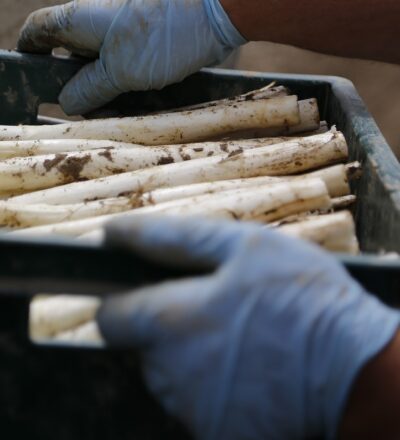Significant food waste and loss are common in the production chain of many agro-materials. This research focused on the conversion of vegetable by-streams into food ingredients with retained flavour profile.
White asparagus was chosen as a model vegetable crop knowing that during its production about 15% of the stem and due to peeling even more material is wasted. Moreover, the asparagus powders available in the market suffer from poor aroma profiles which is often compensated by undesired addition of artificial flavours in food formulations that use such powders. A split-stream processing method was proposed to process wasted asparagus stems, thereby separating the juice from the fibre fraction. The asparagus juice was mildly concentrated and spray-dried into powder with encapsulated volatile flavour compounds. The mechanism of flavour encapsulation during spray drying was investigated as it was hypothesized to provide more flavour retention than traditional hot air drying. For valorisation of the asparagus fibre, different processing methods such as hot air drying, milling, and enzymatic hydrolysis were evaluated to reintroduce the fibre in the final asparagus ingredient.
The work described in this thesis was carried out in the framework of the Institute of Sustainable Process Technology (ISPT) under the project Waste2Taste.
Download your free copy
Our publications are free to access. Simply provide your first name and email address to download.
